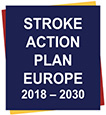Primary Prevention

Stroke is a largely preventable condition
First, measures to promote a healthy lifestyle, such as smoking cessation and reducing alcohol intake that can be implemented at the individual patient level. Second, reductions in air pollution and improvements in socioeconomic and educational status that require action at governmental and societal level.
Ten modifiable risk factors may account for the vast majority of the population attributable risk of stroke, across age groups, genders and ethnicity.
These risk factors are: hypertension, smoking, dyslipidaemia, unhealthy diet, physical inactivity, obesity, diabetes mellitus, cardiac disease, excessive alcohol intake and psychosocial factors.1
Addressing stroke risk factors requires individual and society level interventions – addressing life-style and medical issues. So giving up smoking is an individual intervention, while tackling air pollution is a society level intervention, for example. It is vital to target the whole population with primary prevention initiatives, not just those already at high risk. Extra efforts are needed to reach and work with people of lower socioeconomic status among whom stroke risk factors are more prevalent.

SAP-E Key Performance Indicator
A national strategy for multi-sectorial public health interventions promoting and facilitating a healthy lifestyle and risk factor control has been implemented.
Further research and development priorities
- Which factors are responsible for major health disparities in Europe, including risk factor prevalence and control, and access and adherence to primary prevention? What are the effects of low socioeconomic status and other social factors?
- Can the current risk prediction models be improved by extending the current 10-year risk prediction to 20-year or life-time risk for those at younger age (<40 years), and five-year or life-time risk for those over 75 years?
- Can further individualisation of primary prevention strategies, for example, by considering multiple comorbidities, poly-pharmacy, geographic and ethnic differences and polygenetic risk profiles, enhance effectiveness?
- Can public awareness of the potential for primary prevention of stroke be improved by personalized and public health education about modifiable risk factors?
- What are the benefits and harms of screening for stroke risk factors in different populations, using different approaches such as systematic and opportunistic screening?
- Can adherence to primary prevention interventions be improved by using eHealth or mHealth approaches to encourage self-management, using drug combinations (for example, in ‘polypill’ formulations), and combining individualised approaches with public health interventions?
References
1. O’Donnell MJ, Chin SL, Rangarajan S, et al. Global and regional effects of potentially modifiable risk factors associated with acute stroke in 32 countries (INTERSTROKE): a case-control study. Lancet 2016; 388: 761–775.



